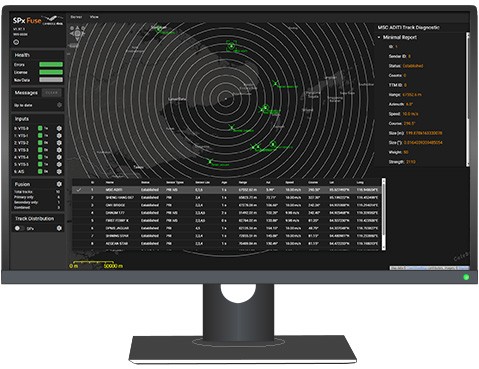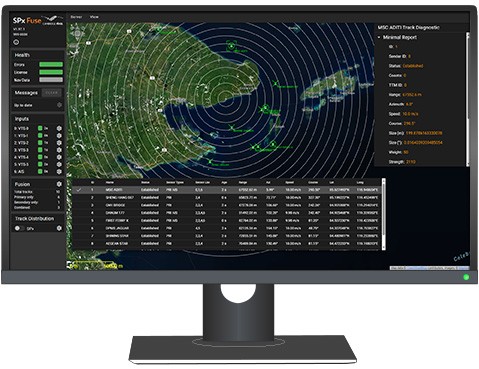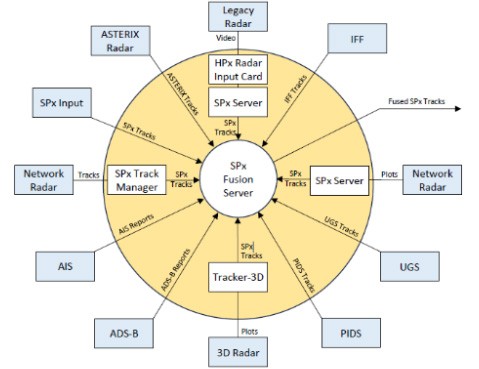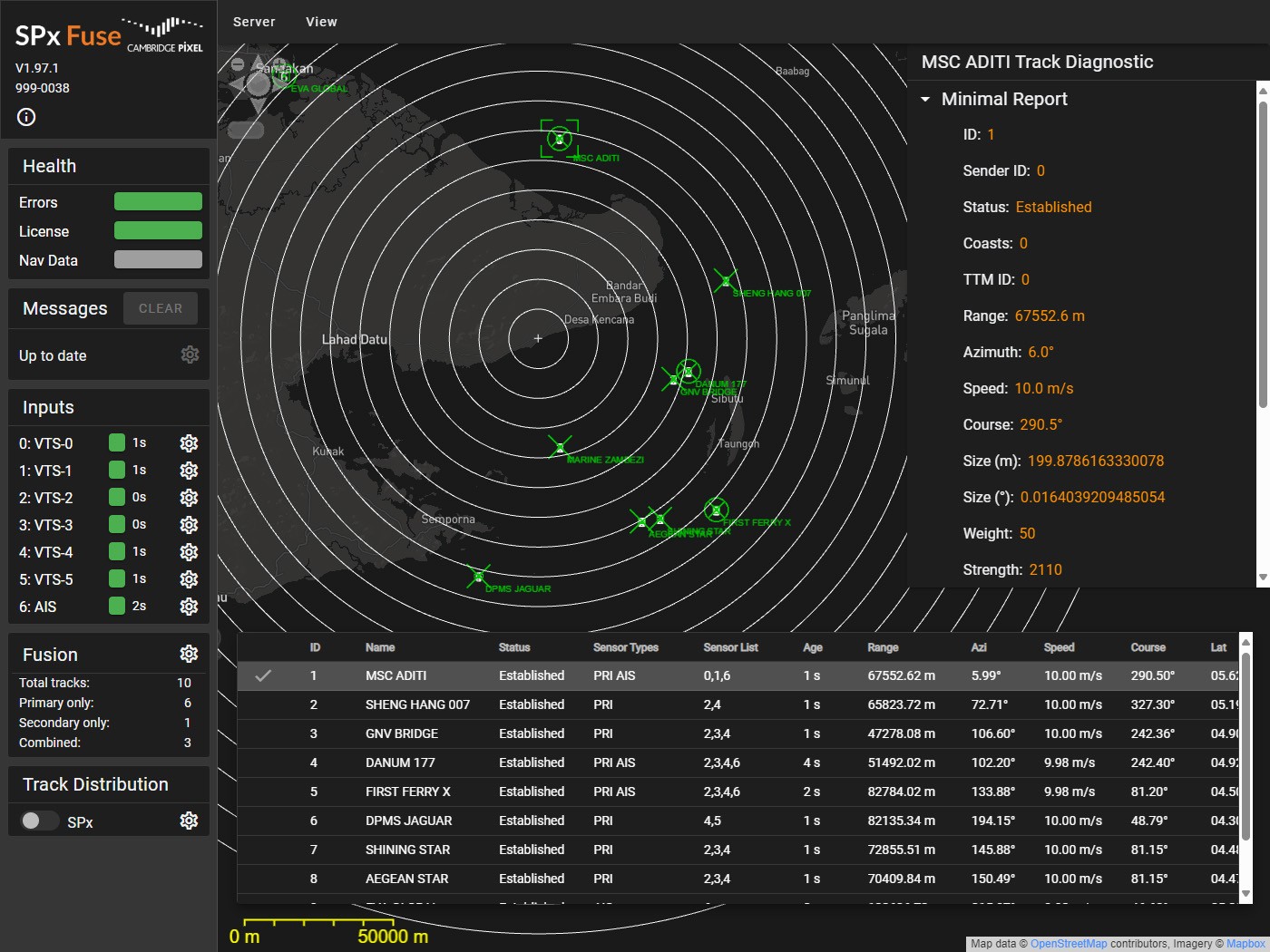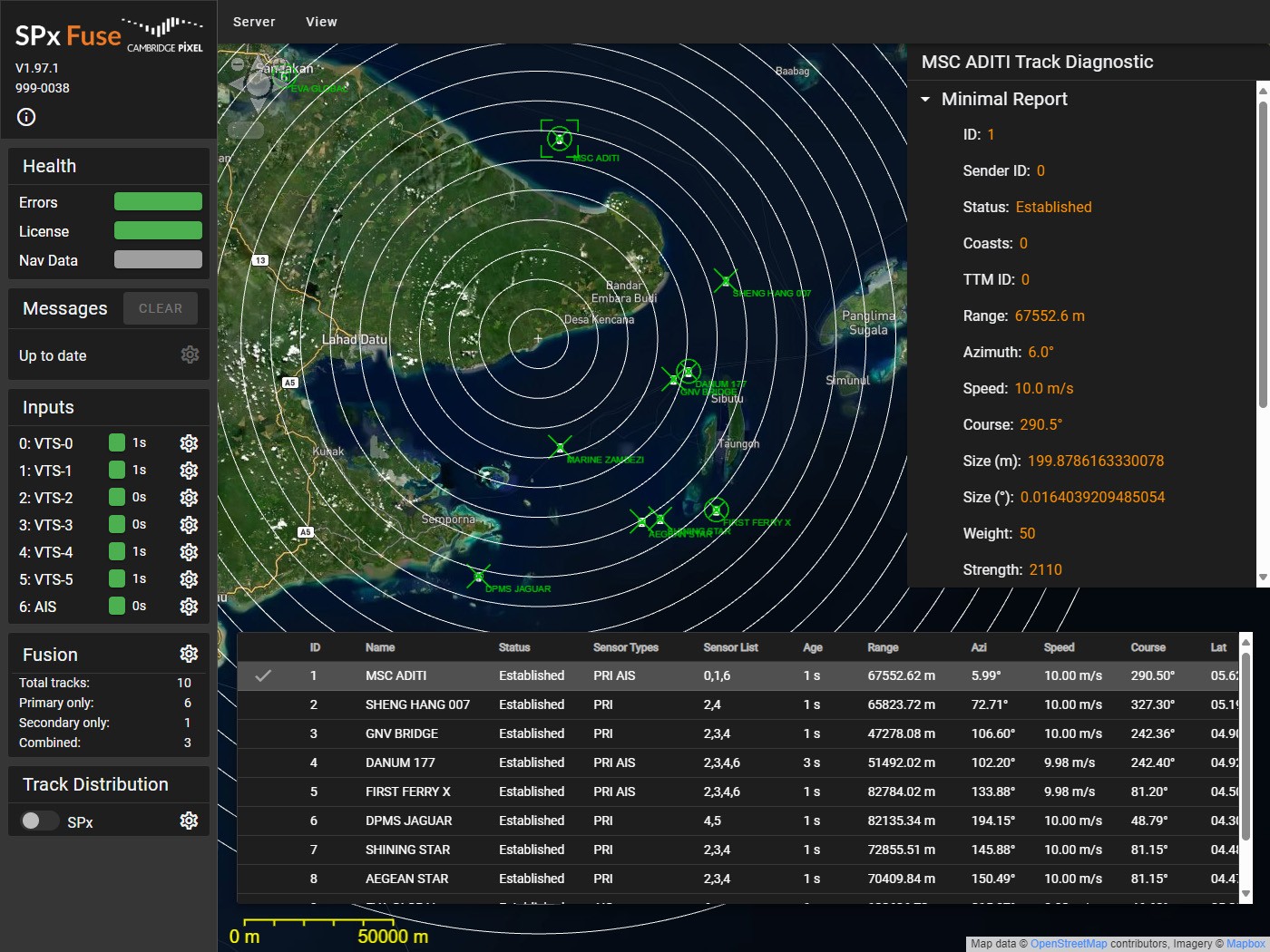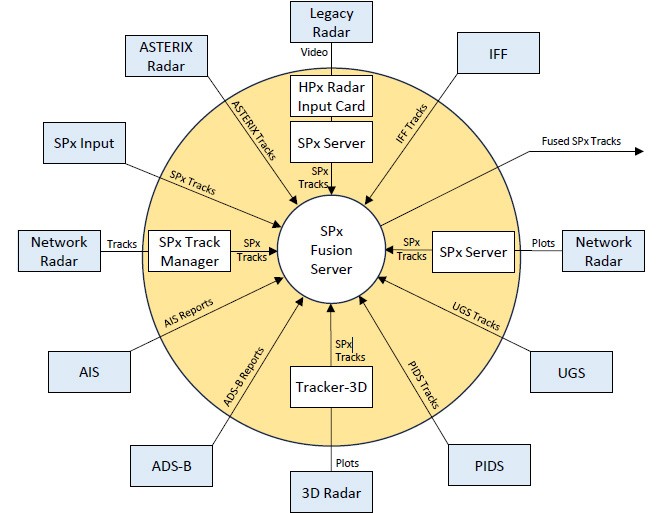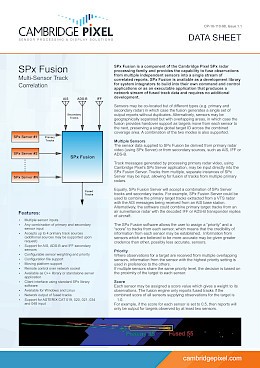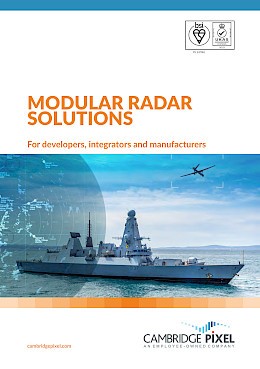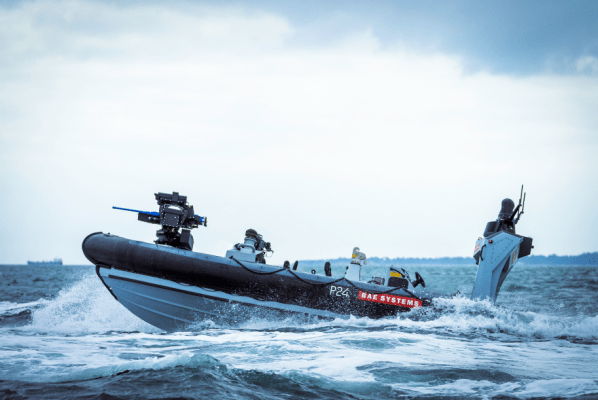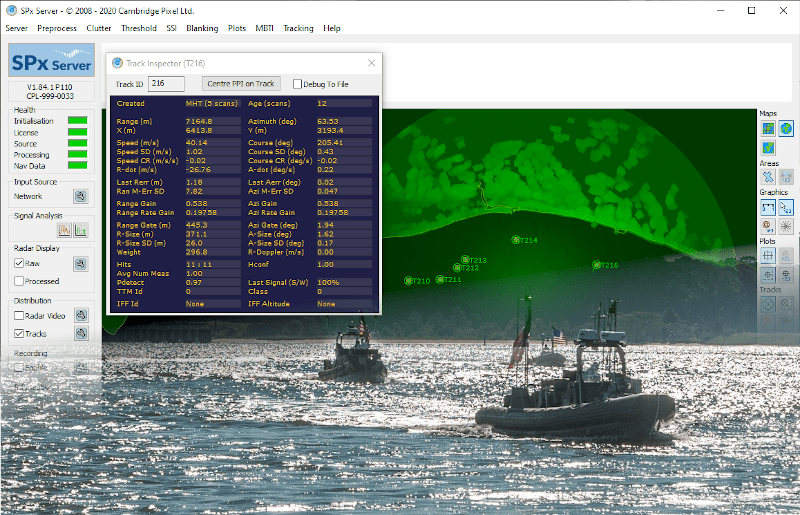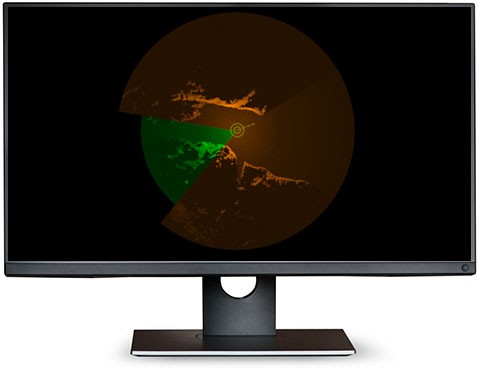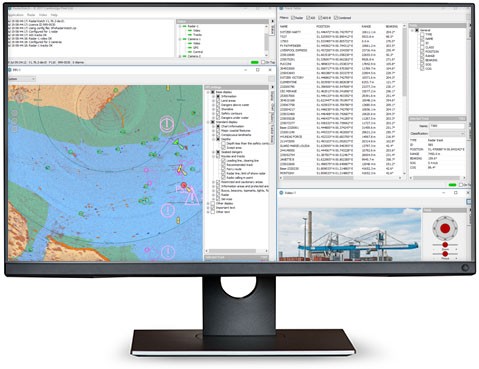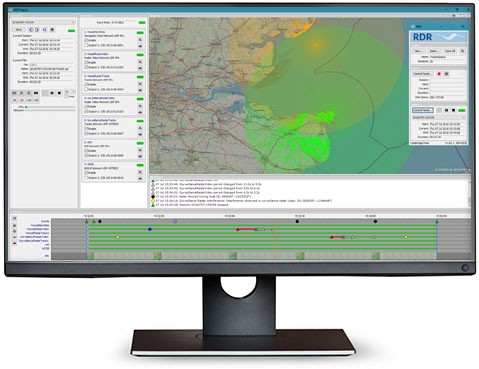New Features Added
- Support for SAPIENT sensor sources
- Enhanced support for track and sensor height references
- Support for virtual AIS reports
- Support for Alert reporting of merges, splits and changes
- From 2 to 32 sensor inputs (can be cascaded for more)
- Supports ASTERIX, SPx, IFF, ADS-B,
- AIS & other georeferenced track report formats
- Configurable sensor prioritisation & scoring
- Network output of fused track reports
- Track reports are unified with consistent track ID labelling
- Available for Windows and Linux
O/S: Windows or Linux
Licence versions: up to 2, 4, 6, 8, 16, 25 or 32 sensor inputs


